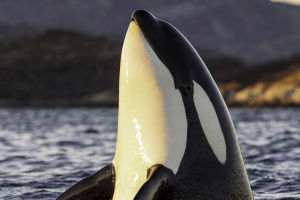The lion, often called the king of the jungle, is one of the most iconic and powerful animals in the animal kingdom.
Known for its majestic appearance and fierce nature, the lion embodies strength, courage, and leadership.
However, there is much more to this magnificent creature than its regal status and intimidating presence. Lions are social animals, unlike many other big cats, which tend to be solitary. They live in groups called prides, where complex social structures govern their behavior and interactions.
These prides are typically made up of related females, their offspring, and a few dominant males. The social nature of lions is a critical aspect of their survival in the wild, as it allows them to cooperate in hunting and defend their territory from intruders.
A key feature that sets lions apart from other big cats is their incredible sense of teamwork.
The males, on the other hand, play an important role in protecting the pride from rival males and other threats. Their larger size and powerful roars act as deterrents to would-be attackers.
When hunting, lions rely on a strategy of ambush and coordination, using the terrain to their advantage to encircle and overpower their prey. Unlike some other predators, lions don't rely on sheer speed alone but instead use their intelligence and cooperative tactics to ensure a successful hunt.
Lions are primarily carnivorous, and their diet consists mostly of large herbivores, such as zebras, wildebeest, and buffaloes. They have adapted to hunt these creatures in the open savannas and grasslands where they reside.
Despite their powerful physique, lions are not the fastest hunters, and they must rely on stamina and strategy to catch their prey. In some cases, a hunt can take several hours or even longer, depending on the prey's resistance and the pride's cooperation. Their ability to run at bursts of speed for short distances is another key adaptation, allowing them to close the gap between themselves and their prey quickly.
Lions are also fascinating in terms of their communication. Their iconic roar, which can be heard from up to five miles away, is not just a show of strength. It serves several purposes, from marking territory to coordinating with pride members during hunts. The roar is a symbol of the lion's power and serves as a reminder to any intruders that they are entering the domain of a powerful and organized group.
One of the most interesting and unique aspects of lions is their role in the ecosystem. As apex predators, lions help control the populations of herbivores, preventing overgrazing and ensuring a balance in the food chain.
By keeping the numbers of large herbivores in check, they allow vegetation to regenerate and maintain a healthy ecosystem. However, lions face numerous challenges to their survival in the wild.
Habitat loss, human-wildlife conflict, and poaching have caused a significant decline in their numbers in recent decades. The lion's habitat is fragmented due to human expansion, and in some regions, lions are forced into closer contact with humans, which often leads to deadly encounters.
The lion's mane is another captivating feature that sets it apart from other big cats. The mane, which is most prominent in males, is a symbol of maturity and strength.
It serves as both a visual signal of the male's dominance and a physical protector, shielding the lion's neck from the bites of rivals during fights. The color and size of the mane can vary, with darker and fuller manes often indicating a healthier, more dominant lion.
The lion is much more than just a predator. It is a symbol of the intricate balance of nature, the power of cooperation, and the necessity of preserving these magnificent animals and their habitats.
Without lions, the ecosystems of the savannas would be drastically altered, and the delicate balance of nature would be disrupted. Their role as apex predators is not only crucial to the health of their environment but also to maintaining the beauty and majesty of the natural world!


